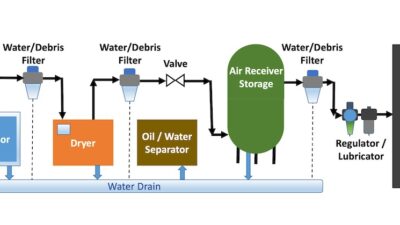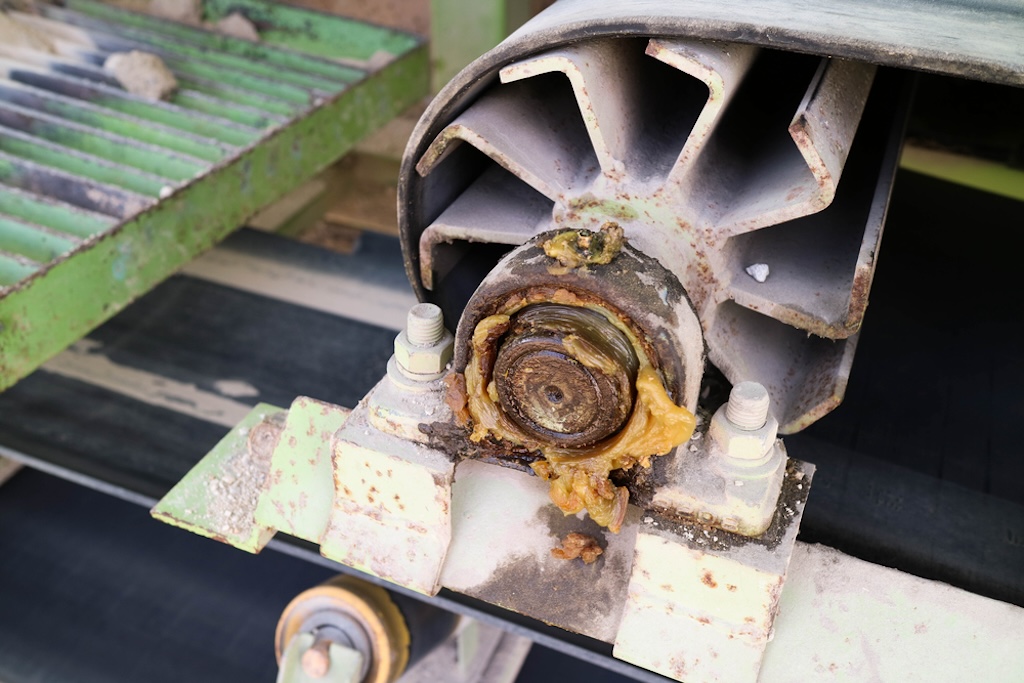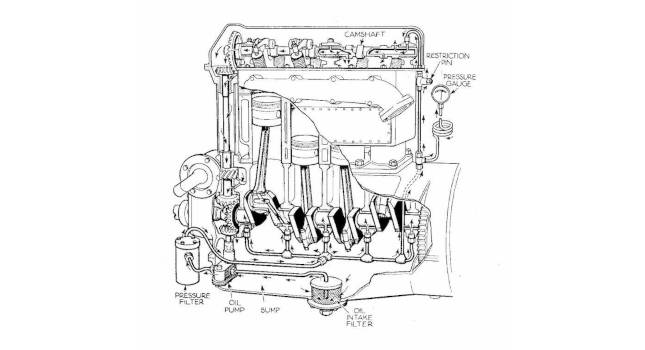It is widely recognized that workers can fall through floor openings greater than 12" x 12".
By J. Nigel Ellis, Ph.D., CSP, P.E., CPE
It is widely recognized that workers can fall through floor openings greater than 12″ x 12″. OSHA consolidated its floor hole and openings in 1994 to a size opening greater than 2″ x 2,” reflecting the danger from broken ankles, legs, and knee damage. The typical situation is that the worker sees a plywood board on the floor and goes to one side of the board and lifts it up. At the point where it starts to move away from him, he walks into it to get closer without ever seeing underneath and walks directly into the opening.
The board usually stays up and closes back over part of the hole again. Holes take approximately 35 lives each year in the U.S.
Roof openings can exist for utility, smoke vent, skylight, or ladder openings.
The typical disguised floor opening is 2′ x 3′ for plastic skylights, 3′ x 3′ for domed skylights,
Domed skylights are useful for sitting, stepping, standing, backing, and stumbling on.
Corrugated skylights age cloudy and yellow, and galvanized corrugated roof decking ages with brown-yellow streaks of rust. Eventually they can look the same from the top. Skylight labels are long gone by that time.
An industry floor opening example is the vehicle servicing pit. Horseplay is one cause of a fall. Another is where a customer will take the plunge while returning to the lobby waiting area.
The blame-the-worker syndrome is part of the “open and obvious” danger defense. In other words, the worker or person should have watched where they were going and probably knew about the opening.
A roof or floor opening is never an open and obvious danger and will always claim its victim who is preoccupied with work or other activity.
Covered holes are those with
Drywall used as a floor hole filler looks like concrete
There was confusion over OSHA’s regulation on floor holes in general industry for many years until the A1264.1 clarified in 1989 the term floor/roof openings. The OSHA 1971 general industry regulations have not themselves been changed in this area so this is probably the reason why employers have only completed 5% installation of their skylights with load-supporting grilles after
Construction
OSHA construction rules published in 1994 are explicit about any hole over two inches minimal dimension. The practical reality is as follows for construction, general industry, and any other hole that endangers a person.
All holes must be covered immediately when they are created
All covers must be secured to prevent casual removal
All covers must be marked in clear language to users in their native language
Holes and roofers
Roofers typically walk backward
Tarps for covering in rain
Options, protocols
Staying 6 ft away from an edge is supposed to be the general rule for edges, but not edges of holes
Manning a hole with a watchman
Categorize the roof as a no-access area (until a roof leak occurs, or caulking is required)
Leaving the hole closed in until the moment of use (such as walkway gratings, precast concrete HVAC openings)
Hazards of covers
Holes that are covered and secured cannot be inspected because nails cannot be seen from six feet distance. Therefore, covered holes must have protection underneath them:
Net attached to bar-joists
A scissor lift (for cutting, installing curbs, and working on the hole for installing utility equipment, HVAC, and skylights).
Covers as solids, nets or grating
The most economical temporary covering to a hole less than 4ft x 8ft is _” construction grade plywood. Nets are useful as pull- over devices in oil change pits and some fixed in place warehouse racks. Gratings are used on some construction sites
Covers as decking on scaffold structures
Planks of scaffold grade wood are cleated or overlapped, whereas hook-on aluminum scaffold planks
Markings for covers must be as follows minimally
DANGER!
HOLE
DO NOT REMOVE COVER!
This is supported by OSHA regulations and ANSI A10.18; the alternative of a colored cover is unreasonable unless language is marked on the cover. Use of the word Caution! or Warning! is also unsatisfactory because they hold no meaning to approaching construction workers or others.
Signs
When employers choose to leave hazards unattended or create hazard solutions which are themselves hazards, they rarely create warnings appropriate for the situation because they do not typically understand the hazard’s dire danger. When they do choose signs they do not meet the requirements of the Z535 standards and are typically CAUTION signs, which rarely gain a worker’s attention.
Covering holes
With a door, plywood, or an instrument sheet metal housing
In a catwalk, the “obstruction” is pushed aside exposing the hazard raising risk
Coverings of floor ports by _” plywood that are nailed down may be insufficient if fork trucks are in the area because of the torque from the wheel can rip the nail through the plywood exposing the hole. Edges need to be beveled or sanded to provide a smooth surface. Bolts need to be used if that does not work.
Tripping hazards
A _” plywood edge will reasonably be a tripping hazard to any person approaching a secured cover often with the result that the person can experience trauma.
Platforms that become holes, an example
When underhung scaffolds are secured they are by tube and coupler, and a back-up coupler is used for added security. However without the right torque level, the standard (pole) can release producing a sag in the floor resulting in loss of planks or create a chute to slide through railings. Standards should be pinned in every such case to avoid the scaffolding peeling from the structure.
Holes are dangerous because every individual will fall down an unguarded and improperly covered floor/roof opening if the opportunity presents itself when the worker is pre-occupied with his work.
Three modes of a hole
A hole in the desert is DORMANT
A hole in the desert with people in the area is ARMED
A hole into which a person falls is ACTIVE
Nigel Ellis has been an expert in close to 1000 cases to date; 250 of those cases involve holes or disguised holes.
To contact the author, call 800-372-7775; fax: 302-571-0756; email: [email protected]
www.FallSafety.com
www.FallSafe.com



